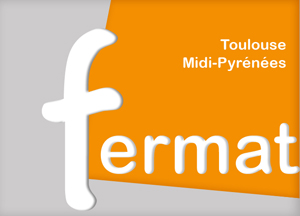Dynamic Cobble Berm Revetment and Composite Beach Morphodynamics and Behaviour
Séminaire Cristian Marchioli – DPIA University of Udine
professeur invité par le groupe FEP du 13 au 24 mars
Lundi 20 mars à 14 h 00 – Amphithéâtre Nougaro
Particle transport and mixing in turbulent flows are fundamental to science as well as to technology. Examples of open scientific issues include emissions reduction in combustion, rheological characterization of fibrous particle suspension, plankton population dynamics, convection of pollutants in the atmosphere, to name a few. The simplest numerical framework to study the dynamical and statistical features of turbulent particle dispersion assumes that particles can be modeled as point-like spheres brought about by the flow. Despite its simplicity, this framework has led to significant advancements in the study of particles-turbulence interactions at the microscale, allowing the precise identification of the coherent structures responsible for particle sedimentation and re-entrainment in turbulent boundary layers. In this talk we briefly recall the physics of particles-turbulence interaction in dispersed flows, as learned from direct numerical simulations, and we examine the bias in particle dispersion that arises when particles are non-spherical (elongated) and deformable, showing how this affects particle motion, preferential concentration and accumulation. We focus on the dispersion of slender flexible fibers in turbulent channel flow, examining fiber orientation and deformation at varying fiber inertia, aspect ratio and bending stiffness. We use an Euler-Lagrange approach based on DNS of the flow, combined to a rod-chain pointwise representation of the fibers (Dotto et al., 2020) and accounting for the inter-phase momentum exchange (Battista et al., 2019). The simulations are performed exploiting a GPU-accelerated pseudo-spectral solver at shear Reynolds number Re=300, moderate mass fraction (3%) with fibers of aspect ratio r=50, 100, 200, dimensionless length L+ = 18, 36, 72 (extending up to the inertial range of the turbulent flow) and Stokes number St= 0.1, 0.11, 11. For each combination of parameter values, different fiber rigidity is considered depending on the dimensionless Young modulus: EY+= 0 (no stiffness) and 104 (moderate stiffness). Our results show that the fibers in the bulk of the flow orient with the local strain, aligning with the vorticity as also observed in HIT (Olivieri et al., 2022) and experience a lower tumbling rate, comparable to that of rigid fibers (Parsa & Voth, 2014; Oehmke et al., 2021). Near the walls, vorticity orients with the spanwise direction under the action of the mean shear, whereas flexible fibers align with the mean flow. This orthogonality determines a stronger contribution of the flow rotation to the tumbling rate. We classify the possible deformed shapes in a bi-variate probability space, suggesting that two typical deformation patterns exist: ’eyelash’ bending and ’compressing’ buckling (the latter being suppressed with a finite, albeit moderate, bending stiffness). Flexible fibers in wall turbulence spend a short time in a bent state, before being stretched again by the flow. This time appears to scale with the fiber rotation timescale and exhibits a gamma distribution.
References:
- Battista, J. P. Mollicone, P. Gualtieri, R. Messina, C. M. Casciola “Exact regularised point particle (ERPP) method for particle-laden wall bounded flows in the two-way coupling regime” J. Fluid Mech. 878 (2019), 420–444
- Dotto, A. Soldati, C. Marchioli “Deformation of flexible fibers in turbulent channel flow” Meccanica 55 (2020), 343–356
- B. Oehmke, A. D Bordoloi, E. Variano, G. Verhille “Spinning and tumbling of long fibers in isotropic turbulence” Phys. Rev. Fluids 6 (2021), 044610
- Olivieri, A. Mazzino, M.E. Rosti “On the fully coupled dynamics of flexible fibres dispersed in modulated turbulence” J. Fluid Mech. 946 (2022)
S. Parsa, G.A. Voth “Inertial range scaling in rotations of long rods in turbulence” Phys. Rev. Lett. 112 (2014), 024501






